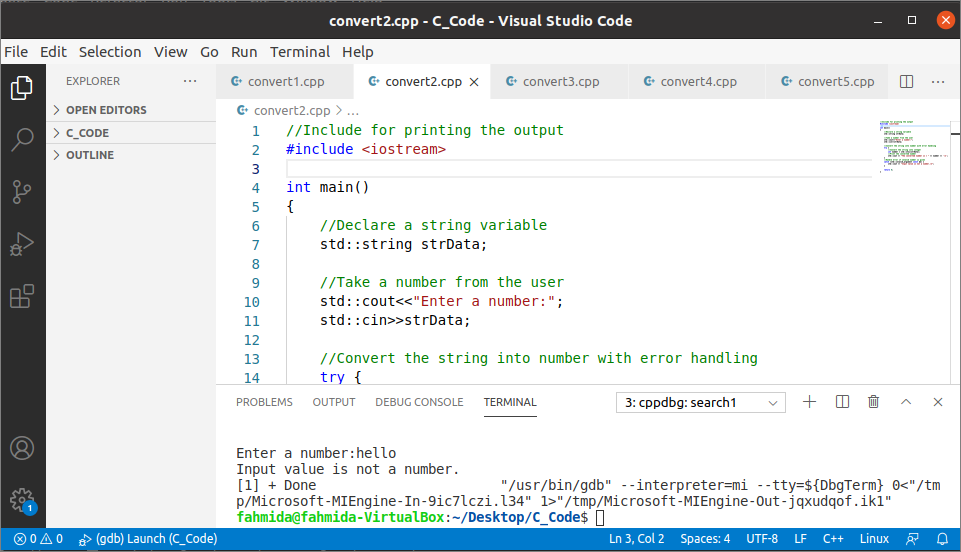
Mostly identical to (aref string 0), except that it returns 0 This function returns the first character in string. This function is semi-obsolete because the function This function returns a new string containing one character,Ĭharacter. String-to-int is an obsolete alias for this function. (string-to-number "25 is a perfect square.") Interpreted as a number, this function returns 0. (On some systems it ignores other whitespace at theīeginning, not just spaces and tabs.) If string cannot be

Then reads as much of string as it can interpret as a number in The parsing skips spaces and tabs at the beginning of string, String-to-number returns a floating-point result. If string looks like an integerīut its value is too large to fit into a Lisp integer, Radices for floating-point numbers, because that would be much more Floating-pointĬonversion only works in base ten we have not implemented other If base is non- nil, it must be an integerīetween 2 and 16 (inclusive), and integers are converted in that base. This function returns the numeric value of the characters in See also the function format in Formatting Strings.įunction: string-to-number string &optional base ¶ Int-to-string is a semi-obsolete alias for this function. This function returns a string consisting of the printed base-ten TheseĪre used primarily for making help messages. ( single-key-description and text-char-description). Of text characters and general input events See Documentation, for functions that produce textual descriptions String-to-unibyte convert the text representation of a string read-from-string (see Input Functions) can convert a string representation of a Lisp object Prin1-to-string (see Output Functions) can also convert This section describes functions for converting between characters, You can take things further by replacing the ‘NaN’ values with ‘0’ values using df.replace: import pandas as pdĭf = pd.Next: Formatting Strings, Previous: Comparison of Characters and Strings, Up: Strings and Characters 4.6 Conversion of Characters and Strings You’ll now notice the NaN value, where the data type is float: Product Price Here is the Python code: import pandas as pdĭf = pd.to_numeric(df,errors='coerce') In that case, you can still use to_numeric in order to convert the strings: df = pd.to_numeric(df, errors='coerce')īy setting errors=’coerce’, you’ll transform the non-numeric values into NaN. What if your column contains a combination of numeric and non-numeric values?įor example, in the DataFrame below, there are both numeric and non-numeric values under the Price column: Product You’ll now see that the values under the Price column are indeed integers: Product Price
#CONVERT STRING TO INTEGER CODE#
Price int32 Step 3 (optional): Convert the Strings to Integers using to_numericįor this optional step, you may use the second approach of to_numeric to convert the strings to integers: df = pd.to_numeric(df)Īnd this is the complete Python code to perform the conversion: import pandas as pd

So this is the complete Python code that you may apply to convert the strings into integers in Pandas DataFrame: import pandas as pdĪs you can see, the values under the Price column are now integers: Product Price Since in our example the ‘DataFrame Column’ is the Price column (which contains the strings values), you’ll then need to add the following syntax: df = df.astype(int) You may use the first approach of astype(int) to perform the conversion: df = df.astype(int) Now how do you convert those strings values into integers? Price object Step 2: Convert the Strings to Integers in Pandas DataFrame When you run the code, you’ll notice that indeed the values under the Price column are strings (where the data type is object): Product Price This is how the DataFrame would look like in Python: import pandas as pd You can capture the values under the Price column as strings by placing those values within quotes. To start, let’s say that you want to create a DataFrame for the following data: Product

Steps to Convert Strings to Integers in Pandas DataFrame Step 1: Create a DataFrame Let’s now review few examples with the steps to convert strings into integers. (2) The to_numeric approach: df = pd.to_numeric(df)

(1) The astype(int) approach: df = df.astype(int) In this guide, you’ll see two approaches to convert strings into integers in Pandas DataFrame:


 0 kommentar(er)
0 kommentar(er)
